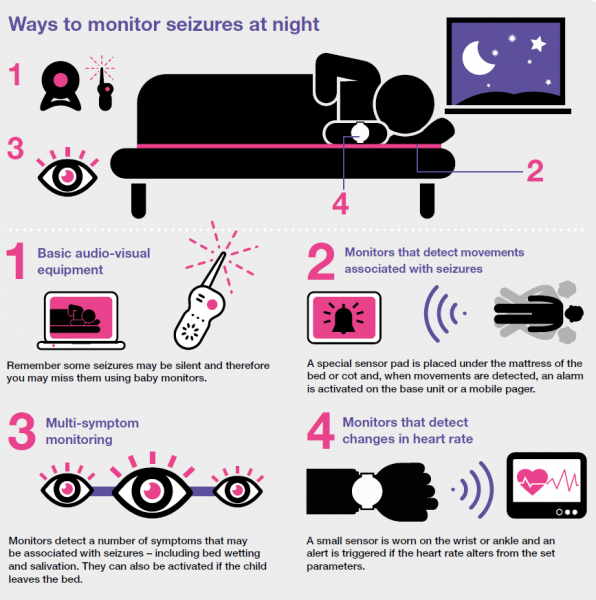Monitoring Seizures at Night

Seizures that occur during the night are often referred to as nocturnal seizures and it is natural to be anxious if you or your child has these. As a parent, you may want to keep a close eye on them, even whilst they are sleeping, but you need sleep too. Some parents find peace of mind in using equipment that alerts you to the onset of a seizure.
The simplest form of device is a listening monitor, such as a baby monitor. This allows you to hear any sounds from your child’s room, but remember some seizures may be silent and therefore you may miss them. You can also have a monitor with a camera, so you are able to see your child. However, neither of these devices will directly alert you to a possible seizure.
Several devices on the market monitor movements associated with seizures, including muscle spasms. A special sensor pad is placed under the mattress of the bed or cot and settings are tailored so its sensitivity levels can be altered to detect even the small movements associated with some seizures. When movements are detected, an alarm is activated on the base unit or a mobile pager. The settings are programmed for each individual and take into account other movements that may be associated with turning over or adjusting sleep position. An adjustable delay control feature allows these movements to be detected without triggering the alarm. As an additional feature some monitors include a microphone to detect any vocalisations or sounds that may occur before or during a seizure.
These monitors are often designed to detect a number of symptoms associated with seizures – including bed wetting and salivation. They can also be activated if the child leaves the bed, if the child falls out of bed during a seizure or leaves the bed in a confused state. There is no one-size fits all solution, but the sensors used in each monitor are personalised according to the needs of the child.
Some research has reported there are often changes in heart rate at the onset of a seizure. A device is now available that monitors heart rate overnight. A small sensor is worn on the wrist or ankle and uses Bluetooth technology to connect to a base unit (dedicated iPad) running an app which sends an alert if the heart rate alters from the set parameters.
Every child is different and so you must be sure to consult your epilepsy doctor if you are considering any of these options.
